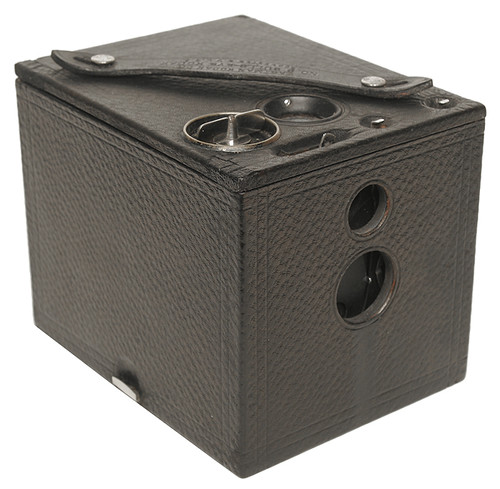Difference between revisions of "No. 2 Bulls-Eye"
m |
|||
| Line 6: | Line 6: | ||
}}{{br}} | }}{{br}} | ||
| − | The '''No. 2 Bulls-Eye''' was introduced in 1892 by the [[Boston Camera Manufacturing Company]]. It was the first rollfilm camera with a red window as exposure number indicator. That was possible since rollfilm was paper-backed. Maybe the red-blindness of early film material was the reason to choose red as color of that window. Kodak copied the camera as No. 2 Bullet camera in 1895, and paid a patent license fee to the original manufacturer for the red window patent. Later Kodak took over the other camera maker. "Bulls-Eye" became a camera brand of Eastman Kodak. | + | The '''No. 2 Bulls-Eye''' was introduced in 1892 by the [[Boston Camera Manufacturing Company]]. It was the first rollfilm camera with a [[red window]] as exposure number indicator. That was possible since rollfilm was paper-backed. Maybe the red-blindness of early film material was the reason to choose red as color of that window. Kodak copied the camera as No. 2 Bullet camera in 1895, and paid a patent license fee to the original manufacturer for the red window patent. Later Kodak took over the other camera maker. "Bulls-Eye" became a camera brand of Eastman Kodak. |
==links== | ==links== | ||
Revision as of 22:43, 1 March 2008

|
| Kodak No. 2 Bulls-Eye |
The No. 2 Bulls-Eye was introduced in 1892 by the Boston Camera Manufacturing Company. It was the first rollfilm camera with a red window as exposure number indicator. That was possible since rollfilm was paper-backed. Maybe the red-blindness of early film material was the reason to choose red as color of that window. Kodak copied the camera as No. 2 Bullet camera in 1895, and paid a patent license fee to the original manufacturer for the red window patent. Later Kodak took over the other camera maker. "Bulls-Eye" became a camera brand of Eastman Kodak.
links
- Bullet vs. Bulls-Eye at BoxCameras.com [1]]
- No. 2 Bulls-Eye at Museum of the History of Science, Oxford [2]
- manual at Michael Butkus Jr.'s [3]